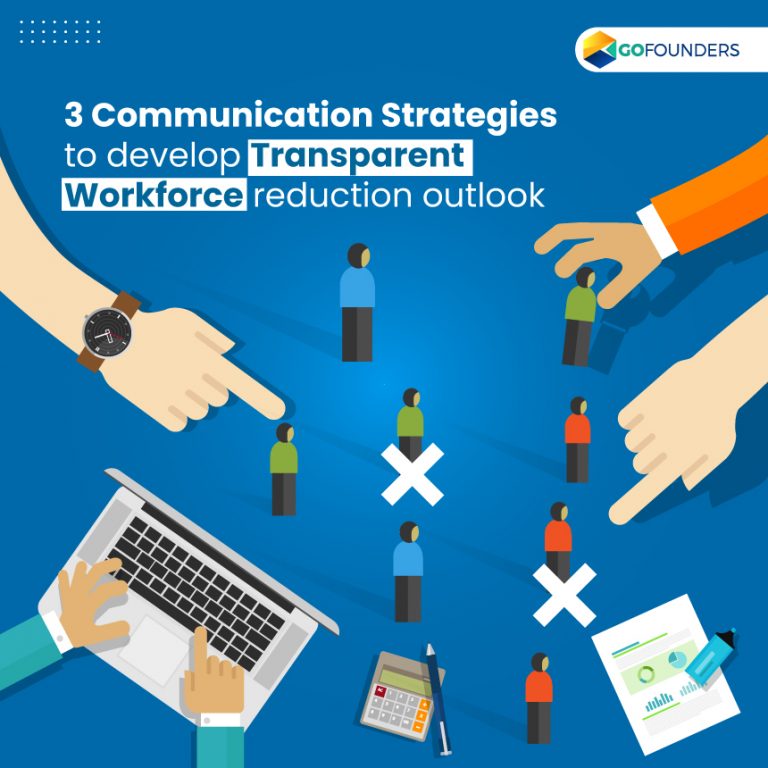
Conversations around the staff scale-downs might get uncomfortable at times. Nevertheless, you, as a growing organization, have to swallow the bitter pill today or tomorrow. A study by the Unversity of South Carolina and the University of Wisconsin has shown that though a workforce reduction results in a 1% rise in leads, it encountered a 31% rise in the number of voluntary employee exits as well.
Thus, how do you execute the workforce reduction process has great value. When appropriately examined, you would realize the vitality of communication in the process.
Communication is key!
Maintaining good communication in your organization can help you in many ways. However, with a workforce reduction process, communication becomes even more valuable. You may develop a well-crafted reduction initiative. However, if the way you communicate the downsizing plan to your employees is confusing or unclear, it may affect your brand’s perception in a negative manner.
Thus, you must frame a well-defined workforce reduction plan. Understanding ‘why’ behind your workforce reduction is the first crucial step in that process. Usually, companies downsize because of changing economic markets, poor sales, improper management etc. Moreover, a reduction plan is essential to curb additional spendings or boost earnings.
Whatever may be the reason, you must communicate well with your temporary and seasonal workers. You must keep them informed about their start and end dates, their responsibilities etc.
You can offer more peace of mind to your current employees and a better employee experience to your temporary or seasonal employees with the right communication strategy.
Following are the three communication strategies that help you develop a people-centric and considerate workforce reduction outlook:
1. Maintain transparency in your offboarding process
Many organizations systematically plan their onboarding process. However, when it comes to offboarding, the same does not necessarily happen. Develop a well-planned workforce reduction plan, and communicate that planning from time to time. By doing so, you ensure transparency with the offboarding process. Thus, your team feels well informed and guided from start to end.
For instance, Michelin CEO Jean-Dominique Senard examined that the company’s Budapest location would have overcapacity, which implies that the company could close the factory in that location. Based on this insight, the company got enough time to put thought into the shutdown process.
ONPASSIVE’s internal communication tool, O-Peer, help your organization maintain clarity and transparency across your team members.
2. Communicate expectations accordingly
When downsizing, communicating every aspect of the workforce reduction plan is inevitable. You cannot take a chance waiting for the right time to communicate policy terms and expectations. Let your team know when and why reductions are coming,
Communicate with team members on what they can expect in the few coming days or weeks. By not communicating expectations upfront and making people surprised by the news, trust can break even before it’s established. This, in turn, affects the relationship with employees.
Facilitate a positive employee experience by communicating clearly about the workforce reduction process and setting expectations accordingly.
3. Communicate over multiple channels
Every employee has his inclination towards the communication being delivered to him. Thus, you should not limit yourself to one specific channel to convey your downsizing plans. Go on to use multiple platforms, maybe email, a text message or phone call.
For instance, you can consider sending a pre-lack of work emails to your seasonal employees. Through a workforce reduction letter, you can communicate how the following procedure will unfold, how employees can prepare in advance, and what all resources company might need to help with the transition.
Using multiple channels at your disposal assign clarity and promptness to the process. You can also ensure that lapses do not influence the experience on the way out for your team.
Concluding Thoughts
As a considerate and supportive organization, you must develop a people-centric outlook at your workplace. While you plan to reduce your workforce, consider formulating well-defined communication strategies that help you execute the process smoothly. Communicate clearly, what employees can expect in advance, during, and after the workforce reduction process. Thereby, enable your employees to get a positive experience at every stage of the process. If you build your organization in this manner, you create a long-lasting impact on your work culture and set an example for many to follow.


